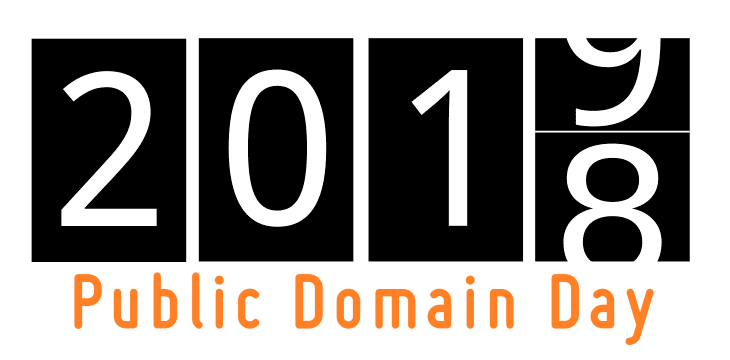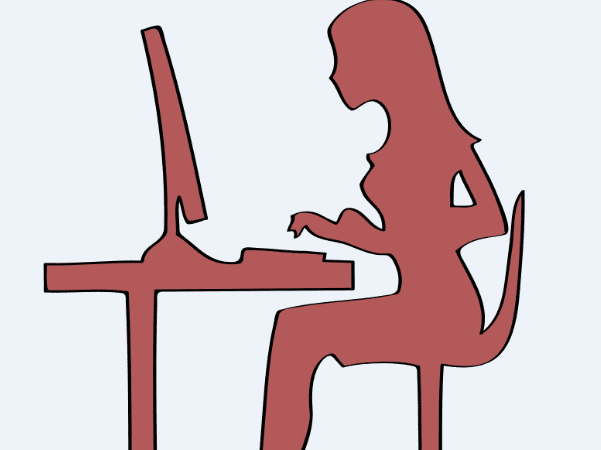Introduction: In this article – to celebrate Public Domain Day – Gena Philibert-Ortega writes about the content from 1923 that is now available copyright-free. Gena is a genealogist and author of the book “From the Family Kitchen.”
Happy New Year 2019 and Happy Public Domain Day! Public Domain Day? Yes! Yesterday, January 1, was the day that works from 1923 entered the public domain and can be used by anyone without a fee or request to the copyright holder. (1)
Why is this year’s Public Domain Day so special? For the first time in 20 years, materials will be entering the public domain because:
“…works from 1923 were set to go into the public domain in 1999, after a 75-year copyright term. But in 1998 Congress hit a two-decade pause button and extended their copyright term for 20 years, giving works published between 1923 and 1977 an expanded term of 95 years.” (2)

So, what does this mean for the family historian? Family history is more than a name, date, and place. Family histories that non-historians enjoy include information that tells the story of life from the perspective of previous generations. This is done by incorporating images and content from books, articles, music, and movies. The year 1923 was a long time ago and these works now entering the public domain provide us with ways to add social history to the narrative of our ancestors’ lives.
The following are three examples of books, now available in the public domain, that you may want to consider as you tell the story of your early 20th century ancestor’s life.
Jessie Conrad: A Handbook of Cookery for a Small House
It’s probably no surprise to you that the first thing I looked for in the list of new public domain works was a cookbook. There are actually a handful of cookbooks (and most likely more) that will now be available to us. Cookbooks help us understand what our family was eating as well as what foods were available during their lifetimes.
This cookbook example is especially interesting: A Handbook of Cookery for a Small House by Jessie Conrad, wife of novelist Joseph Conrad. Mrs. Conrad was not well thought of compared to her author husband, and it would seem that her attempt at a cookbook cemented her lackluster reputation. Joseph wrote the introduction to his wife’s cookbook, and in doing so made some snicker that the introduction was the best part of the work.
It appears that newspaper columnist Florence LaGanke was also not a fan. In her Plain Dealer article titled “Of Making of Many Cook Books There Is Neither Time nor End,” she writes:
“She [Jessie Conrad] is the wife of THE Joseph Conrad. She asked her husband to write the introduction to her book… When the book came out, I noticed that all the reviewers spoke of the introduction, but neglected to talk about the recipes. They did well, for the recipes are not practical, not worth trying. The book is supposed to deal with English cookery, but I do not believe that any of us would see much good in the food of the English, if they followed Mrs. Conrad’s directions.”
Ouch – tough review. But I think this British food cookbook will be an interesting one to read.
Edith Wharton: A Son at the Front
When researching the 1920s it’s important to remember what was going on in society during that time. The world was recovering from two major, recent events: World War I and the influenza pandemic. These twin disasters affected our ancestors in many ways and influenced their lives for years to come. Edith Wharton’s novel A Son at the Front focuses on the pain that parents feel after the loss of a child on the battlefront. One website reports that her novel was:
“…largely criticized or ignored by a war-weary public when it was originally published in 1922.” (3)
One of the benefits of the public domain is the ability for the public to revisit important works. Wharton was an active participant in the war effort in France, and so she wrote a fictional work based on her very knowledgeable standpoint. This is one book that may help family historians who had World War I deaths better understand the time period and perhaps tell their own family story better.
Richard Hale (compiled by his daughter Carolyn Hale Russ): The Log of a Forty-Niner
The best part of family history research is when we find something extraordinary: a photo of our ancestor, mention of them in an unusual source, or even a diary or letter that they wrote. Unfortunately, most of us aren’t that lucky. So, if your ancestor didn’t leave behind a first-hand account of their life, you should seek out the writings of people who wrote about their similar experiences. The Log of a Forty-Niner is a good example. According to Google Books:
“The Log of a Forty-Niner offers rich accounts and interesting illustrations to immerse a reader in the experiences of a fortune-seeker encountering the natural beauty of the West Coast.” (4)
This book is from Hale’s journal detailing his journey from Newburyport, Massachusetts, to San Francisco, California (where he did not strike it rich, like the majority of forty-niners), and then his adventures traveling to places such as Oregon and Peru before settling back in his hometown. His details of life on the road (including the 159-day sailing journey to San Francisco) include sketches he drew. According to this Boston Herald review:
“The story of that 150-day voyage fills 64 pages and then we get the picture of San Francisco in 1850.”
New Resources!
So, what now? Check out the list of public domain works available from the Center for the Study of Public Domain. This list is not comprehensive but can help you identify potential works of interest. While I highlighted books in this blog article, there is so much more to peruse – including wonderful jazz songs by Jelly Roll Morton and movies by Charlie Chaplin. Google Books and Internet Archive will be adding 1923 materials to their collections. (5)
These “new” resources have a lot to offer family historians as we learn more about our ancestors’ lives through materials created during their lifetimes.
____________________
(1) There are exceptions. To learn more see the article Public Domain Day 2019 on the Center for the Study of the Public Domain at https://law.duke.edu/cspd/publicdomainday/2019/.
(2) “Public Domain Day 2019,” Center for the Study of the Public Domain (https://law.duke.edu/cspd/publicdomainday/2019/: accessed 20 December 2018).
(3) “Edith Wharton: A Son at the Front (LOA eBook Classic),” Library of America (https://www.loa.org/books/437-a-son-at-the-front-loa-ebook-classic: accessed 20 December 2018).
(4) “The Log of a Forty-Niner,” Google Books (https://books.google.com/books?id=vxLroQEACAAJ&dq=the+log+of+a+forty+niner&hl=en&sa=X&ved=0ahUKEwiJu8iv7q7fAhUSFXwKHf3HBBQQ6AEIKjAA: accessed 20 December 2018).
(5) Ibid.
